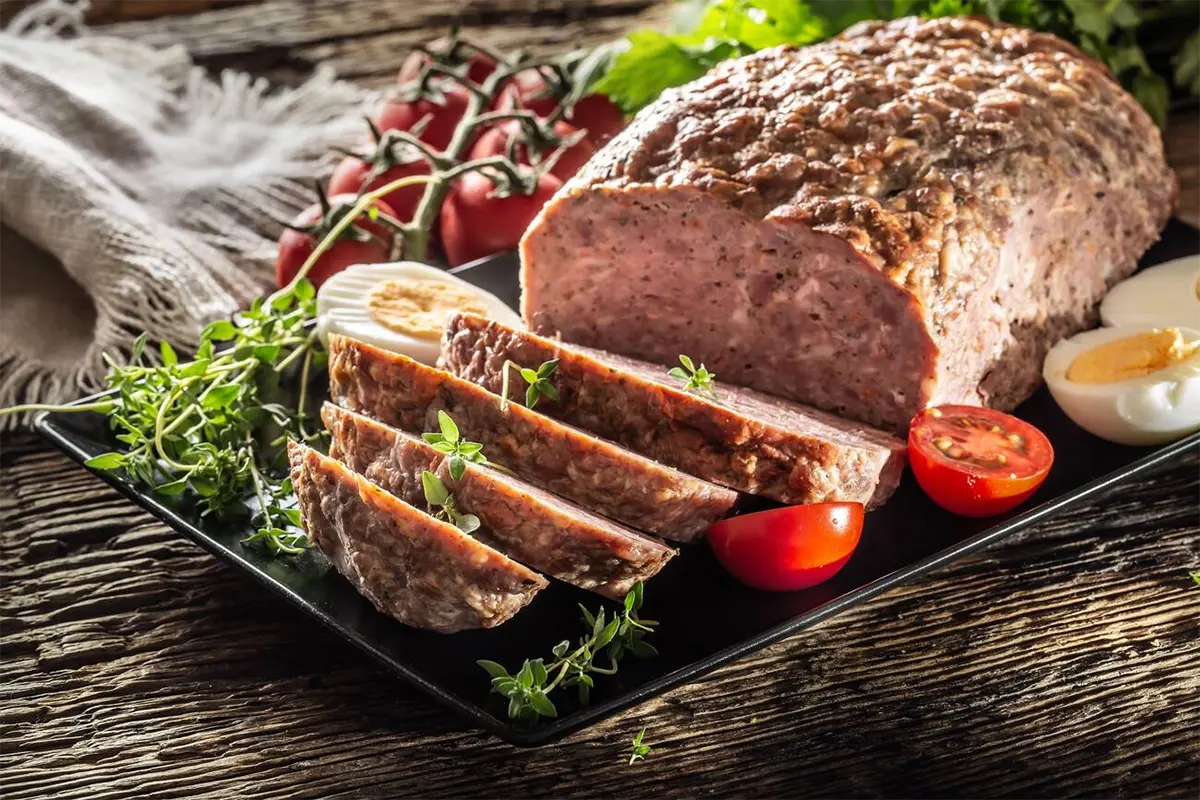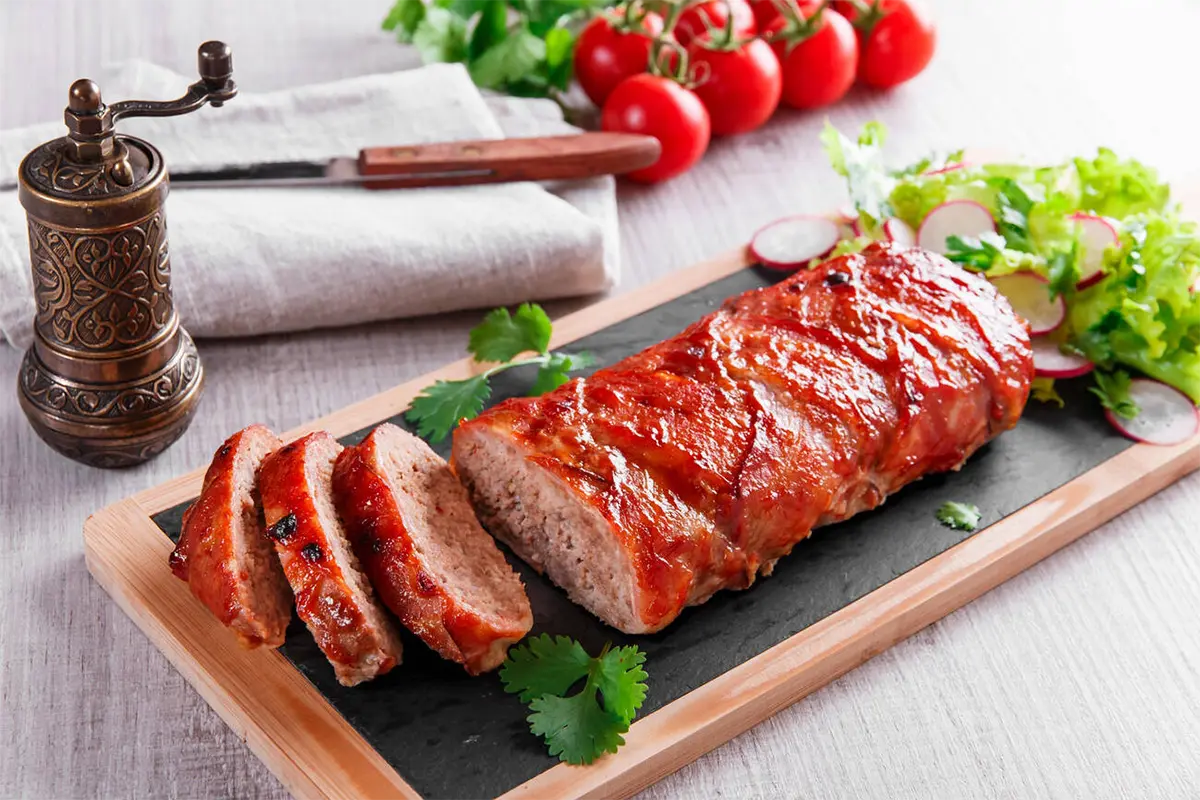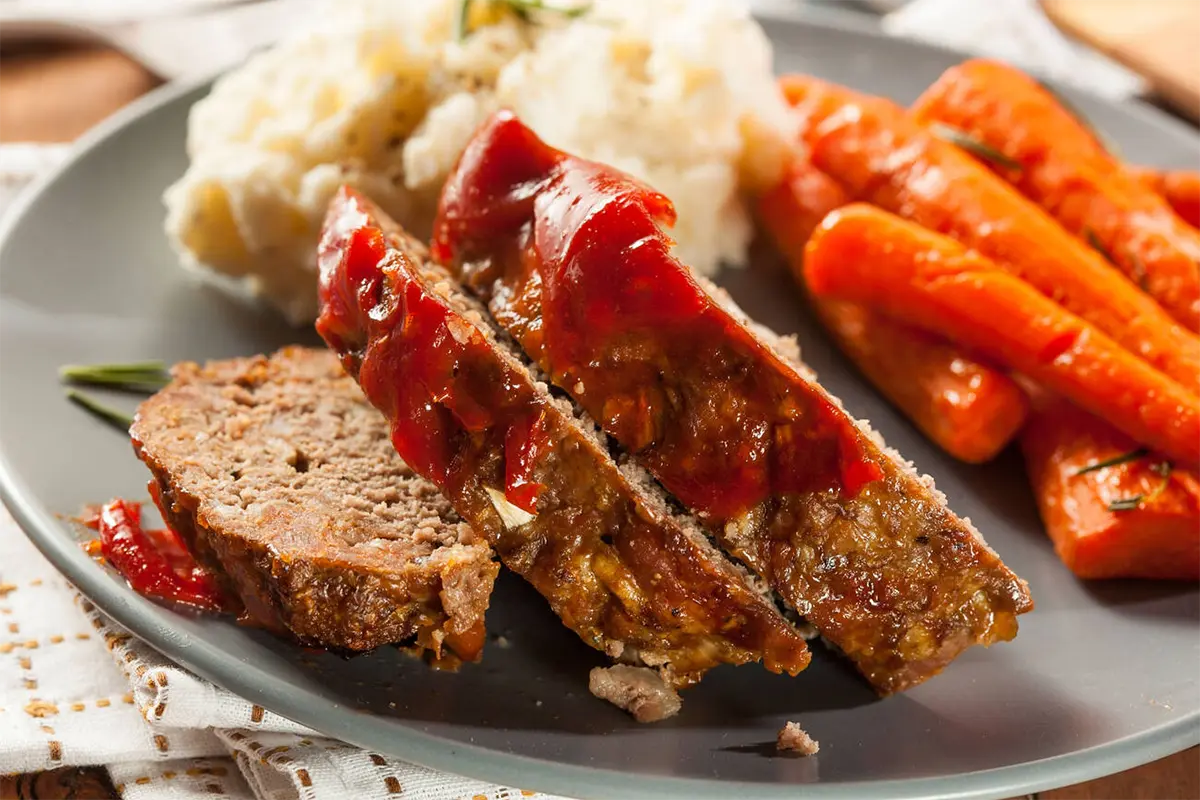“Embarking on the journey to perfect meatloaf recipes transcends mere recipe following; it’s a fusion of tradition, innovation, and culinary finesse. This guide will shepherd you through the nuances of crafting the ultimate meatloaf, spotlighting ingredient selection and final presentation mastery. With a pinch of creativity and a dash of culinary science, we’re set to demystify the process of creating a meatloaf that’s not only mouthwatering but also maintains its shape beautifully. Ready to peel back the layers of this culinary enigma? Let’s jump in!”
introduction to the Art of Meatloaf: Mastering Meatloaf Recipes for Every Home Cook
Unraveling the Mystery of Perfect Meatloaf
“Creating the perfect meatloaf unfolds like an art form, conjuring up images of warm family gatherings and rich, comforting meals. This staple dish, rooted in simplicity, has ascended to culinary prominence, inviting chefs to weave in their personal touch through flavors, textures, and ingredients in their meatloaf recipes. Yet, crafting a loaf that’s both succulent and structurally sound can sometimes pose a real head-scratcher. However, worry not, as we’re here, every step of the way, to illuminate the path to meatloaf mastery.”
The Challenge of a Cohesive Loaf
“Now, let’s tackle the core issue head-on in our quest for perfect meatloaf recipes—ensuring your meatloaf sticks together, sidestepping the dreaded dry and crumbly outcome. It’s all about striking the right balance; a loaf that’s tender yet can hold its own when sliced. The cornerstone? Indeed, it lies in the binding ingredients. As we venture further, we’ll explore the alchemy of eggs, breadcrumbs, and their viable alternatives that unify the loaf.”
Key Ingredients for Success
“Yet, the journey to perfecting meatloaf recipes doesn’t end with binders. The choice of meat, the ratio of wet to dry components, and even the method of mixing play pivotal roles in the loaf’s fate. Take fat content, for example, it’s essential not only for taste but also for texture, acting as a natural adhesive. Furthermore, the blend of meats and extra ingredients can transform a basic meatloaf into a culinary masterpiece, brimming with flavors and textures. So, let’s gear up and dive deep into the meatloaf realm, where tradition sparks innovation, and every chef finds their stride.”
The Role of Binding Ingredients in Meatloaf Recipes: The Glue of Meatloaf
Eggs: Nature’s Binder
Certainly, eggs play an indispensable role in the creation of meatloaf, acting as nature’s perfect binder. When whisked into the mix, eggs work their magic, melding the disparate ingredients into a cohesive whole. This is because, during the cooking process, eggs coagulate, which means their proteins change structure and set, binding the meat, breadcrumbs, and seasonings tightly together. As a result, the loaf emerges from the oven with a structure that’s firm enough to slice yet remains tender and moist, a balance that’s often hard to achieve.
Moreover, the versatility of eggs extends beyond just binding. They also contribute to the moisture and richness of the meatloaf, enhancing its flavor profile. This is especially important in recipes that lean towards leaner meats, where the risk of ending up with a dry loaf is higher. Eggs counteract this by imparting a subtle richness, ensuring that every bite is as juicy as it is delicious.
Furthermore, the use of eggs in meatloaf preparation is a testament to their role as a culinary staple. They’re not merely an ingredient but a fundamental building block that influences texture, taste, and overall structure. Their inclusion is a nod to both tradition and the understanding of cooking as a science, where each component plays a critical role in the dish’s success.
In essence, while often understated, eggs are truly the unsung heroes of the meatloaf world. They’re the secret ingredient that binds, moistens, and enriches, transforming a mix of ground meat and seasonings into a loaf that’s hearty, flavorful, and satisfying. So, when you’re crafting your next meatloaf, give a nod to the eggs that hold it all together, ensuring your culinary creation is nothing short of spectacular.

Breadcrumbs and Alternatives
Breadcrumbs have long been heralded as the cornerstone of meatloaf making, performing the critical function of moisture absorption. This ensures that the meatloaf maintains its shape and texture, rather than succumbing to sogginess. However, the culinary world is ever-evolving, welcoming dietary preferences and creative twists with open arms. For those venturing into gluten-free territories or simply yearning for a change, a variety of substitutes stand ready to take the stage.
Firstly, rolled oats emerge as a stellar alternative, bringing a hearty texture and an added nutritional punch to the table. Not only do they adeptly soak up excess moisture, but they also blend seamlessly into the mixture, ensuring the meatloaf remains cohesive and sliceable. This makes oats an ideal choice for health-conscious individuals or those with specific dietary requirements.
Similarly, crushed crackers offer another avenue for innovation. Available in gluten-free options, they can replace breadcrumbs without compromising the meatloaf’s structural integrity. The crackers, with their crisp texture, dissolve into the meat mixture, acting as a glue while imparting a subtle, baked flavor that elevates the overall taste profile of the dish.
Moreover, these alternatives highlight the flexibility of meatloaf as a dish. They allow cooks to experiment with different textures and flavors, adapting the recipe to suit various dietary needs or personal preferences. Whether opting for the nutty undertones of oats or the savory crunch of crackers, these substitutes prove that you can maintain the beloved cohesion and texture of meatloaf while catering to a wider audience.
In conclusion, the journey beyond breadcrumbs opens up a realm of possibilities for personalizing meatloaf. By embracing alternatives like rolled oats or crushed crackers, you can craft a dish that not only meets dietary requirements but also introduces an exciting twist on the traditional, making each bite a delightful exploration of flavors and textures.
Choosing the Right Meat
Fat Content’s Impact on Binding
Selecting meat with the right fat content is crucial. Interestingly, fat acts as a natural binder, enhancing both flavor and texture. A lean mix might lead to a dry loaf, whereas a bit more fat ensures juiciness and helps the loaf hold together better. Thus, aiming for a balance gives your meatloaf the best of both worlds: it’s flavorful, moist, and doesn’t fall apart.
Mixing Different Meats for Optimal Texture
Indeed, blending different meats for your meatloaf can transform it from a simple dish to a culinary masterpiece. By mixing beef with pork or veal, you introduce a symphony of flavors and textures that significantly enrich the end product. Beef, with its deep and hearty flavor, lays the foundation for a robust loaf. On the flip side, pork adds a layer of juiciness and tenderness, thanks to its higher fat content, ensuring the loaf remains moist and succulent throughout the cooking process. Veal, often considered a gourmet addition, brings a delicate and refined taste that complements the stronger flavors of beef and pork.
Furthermore, this mixing technique offers a practical solution to the common issue of dense meatloaf. While beef might lead to a firmer texture, the inclusion of pork or veal introduces fat and moisture, acting as natural tenderizers. As a result, the loaf becomes lighter and more palatable. Additionally, the diverse protein structures of these meats interact in the cooking process, creating a final product that is not just a treat for the palate but also pleasingly tender to the bite.
Moreover, the beauty of this approach lies in its versatility. Experimenting with the ratios of each meat type allows you to customize the loaf to your preference, whether you’re after a more pronounced beefy flavor or a softer, more delicate texture. Importantly, this strategy of blending meats ensures that every slice of meatloaf is moist, flavorful, and, above all, perfectly textured.
In summary, the technique of mixing different meats is a cornerstone for achieving an optimal meatloaf texture. It’s a method that not only elevates the taste but also addresses the textural challenges, resulting in a loaf that is tender, succulent, and wonderfully complex in flavor.
Beyond Breadcrumbs: Creative Binding Solutions
Using Rice and Barley
Exploring unconventional binders brings us to the doorstep of grains like rice and barley, which stand out as exceptional choices. These grains do more than just hold the meatloaf together; they introduce a delightful texture that makes each bite a discovery. As they cook within the loaf, rice and barley soak up the surrounding flavors, becoming little pockets of taste that enhance the overall savory experience of the meatloaf.
Moreover, the addition of these grains can be a game-changer for those looking to add a nutritional boost to their dish. Both rice and barley are rich in vitamins and fibers, contributing to a healthier meal without compromising on taste or texture. This makes them especially appealing for families looking to sneak more wholesome ingredients into their diet.
Additionally, the versatility of rice and barley allows for a range of culinary experimentation. Whether you opt for white, brown, or even wild rice, each variety brings its own unique flavor and texture profile to the meatloaf. Similarly, barley, with its nutty essence and chewy consistency, can add an unexpected but welcome twist to the traditional meatloaf texture.
Finally, incorporating cooked rice or barley into your meatloaf mixture is a straightforward process that promises rewarding results. These grains blend seamlessly with the meat and other ingredients, ensuring that your loaf will hold together beautifully while offering a moist and tender texture. So, for those adventurous cooks looking to elevate their meatloaf game, rice and barley offer a path to both innovation and indulgence, making every slice of meatloaf a testament to the joys of culinary creativity.

Vegetarian Options: Lentils and Oats
For those exploring meatless versions, lentils and oats offer great alternatives. Lentils, with their meaty texture, blend well into vegetarian loaves, providing the needed structure. Oats, on the other hand, are great at absorbing moisture, ensuring your meatloaf doesn’t turn crumbly. These ingredients not only hold the loaf together but also contribute to its nutritional value, making your meatloaf healthier and equally satisfying.
The Delicate Balance of Moisture
Wet Ingredients for Moisture Without Crumbling
Achieving the right moisture level in meatloaf recipes is key. Adding wet ingredients like ketchup, mustard, or Worcestershire sauce can do the trick. These elements provide moisture and flavor, ensuring your meatloaf remains juicy without falling apart. It’s all about finding that sweet spot where the loaf stays moist but still slices cleanly
How Liquids Affect Binding
Liquids play a dual role in meatloaf. On one hand, they’re essential for a tender, flavorful loaf. On the other, too much liquid can weaken the binding, leading to crumbling. The solution? Balance. A correct ratio of liquid to dry ingredients, coupled with the right binders, ensures your meatloaf holds together, offering the best of both worlds: it’s moist, delicious, and perfectly sliceable.
The Art of Mixing: Techniques That Make a Difference in Meatloaf Recipes
Gentle Mixing to Preserve Texture
Gentle mixing is crucial for a tender meatloaf. Use your hands to lightly blend the ingredients. This approach ensures even distribution without overworking the meat. A light touch maintains the meat’s texture, resulting in a loaf that’s firm yet soft.
Avoiding Over compaction
Over compaction turns meatloaf dense. Mixing too vigorously or packing the meat too tightly in the pan can cause this. Instead, shape your loaf loosely. This technique allows heat to circulate evenly, cooking the meatloaf thoroughly while keeping it moist and easy to slice.
Recipe for Success: Essential Ingredients and Directions for Meatloaf Recipes
Key Ingredients and Binding Agents for Meatloaf Recipes
For a loaf that serves 6-8, you’ll need:
- 1 lb ground beef (20% fat)
- 1/2 lb ground pork
- 2 eggs (binding agent)
- 1 cup breadcrumbs (binding agent)
- 1/3 cup milk
- 1/4 cup ketchup
- 1 onion, finely chopped
- 2 cloves garlic, minced
- 1 tsp salt
- 1/2 tsp black pepper
- 1/2 tsp dried thyme
- 1/2 tsp dried oregano
Step-by-Step Instructions
- Preheat your oven to 350°F (175°C).
- In a large bowl, combine the beef and pork. Add the eggs and breadcrumbs.
- Pour in milk and ketchup. Add onion, garlic, salt, pepper, thyme, and oregano.
- Gently mix with your hands until just combined. Avoid over-mixing.
- Shape the mixture into a loaf on a baking sheet lined with parchment paper.
- Bake for 1 hour or until the internal temperature reaches 160°F (71°C).
- Let it rest for 10 minutes before slicing.
Expert Tips for a Firm Yet Tender Loaf
- Bind wisely: The eggs and breadcrumbs are your friends for a loaf that holds its shape.
- Mix gently: Overworking the meat can make it tough. A gentle mix ensures a tender texture.
- Rest before slicing: Letting your meatloaf rest allows the juices to redistribute, making it moist and easier to slice.
- Season well: Don’t skimp on the seasonings. They’re key to a flavorful loaf.
Following these tips and directions, you’re well on your way to mastering the perfect meatloaf that’s both firm and tender, a true centerpiece for any meal.
Solving Your Meatloaf Dilemmas: Tips for Perfect Meatloaf Recipes

Can I Make Meatloaf Without Eggs?
Yes, you can! For those avoiding eggs, alternatives like mashed potatoes or flaxseed gel work wonders. They bind the ingredients well, ensuring your meatloaf stays together. So, don’t worry; egg-free meatloaf can still be delicious and cohesive.
Are There Gluten-Free Options for Meatloaf Binders?
Absolutely! If you’re cutting out gluten, try using gluten-free breadcrumbs or oats as your binder. These substitutes keep your meatloaf together and add a lovely texture. Thus, making a gluten-free meatloaf is not only possible but also simple and tasty.
How Can I Ensure My Meatloaf Stays Moist and Doesn’t Fall Apart?
The secret lies in the balance of ingredients. Ensure you’re using enough binding agents, like breadcrumbs or eggs, and don’t skimp on wet ingredients such as ketchup or Worcestershire sauce. Gently mix to combine everything without overworking the meat. This way, your meatloaf will stay moist, flavorful, and intact.
Elevating Your Meatloaf Game
Experimenting with Flavors and Textures
To elevate your meatloaf, mix in unexpected ingredients. Try adding chopped sun-dried tomatoes, olives, or even a bit of grated cheese for a burst of flavor. Also, consider swapping regular breadcrumbs for panko for a lighter texture. These changes can make a world of difference, adding depth and intrigue to every bite.
Presentation and Serving Ideas for Meatloaf Recipes
First impressions count, so make your meatloaf stand out. Slice and serve it on a bed of fresh greens or alongside a vibrant vegetable medley. For an extra touch of elegance, drizzle your slices with a homemade glaze or gravy before serving. These simple steps can transform your meatloaf from a household staple into a dinner party centerpiece.
LSI and NLP Keywords
- Meatloaf binders
- Meatloaf crumbling solutions
- Gluten-free meatloaf binders
- Meatloaf moisture balance
- Meatloaf mixing techniques
- Egg substitutes in meatloaf
- Vegetarian meatloaf binders
- How to make meatloaf stick together
External Links and Recommended Anchor Text
- American Egg Board on Eggs as Binders – “Eggs: The Ultimate Binding Ingredient”
- Celiac Disease Foundation on Gluten-Free Cooking – “Gluten-Free Meatloaf Binding Options”
- National Meat Association on Meat Selection – “Choosing the Right Meat for Meatloaf”

